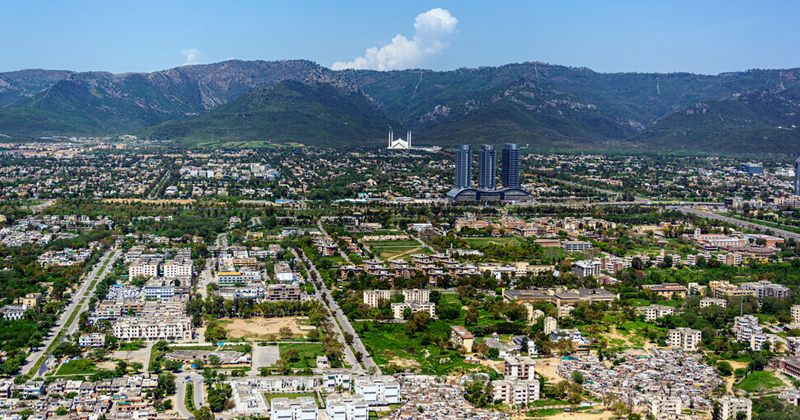You are using an out of date browser. It may not display this or other websites correctly.
You should upgrade or use an alternative browser.
You should upgrade or use an alternative browser.
Lunar eclipse turns moon blood red
Night_Hawk
Siasat.pk - Blogger
A combination of pictures taken in Belgrade shows the moon in various stages of a total lunar eclipse on June 15, 2011. Astronomers in parts of Europe, Africa, Central Asia and Australia enjoy a total lunar eclipse today, the first of 2011 and the longest in nearly 11 years. A total lunar eclipse occurs when Earth casts its shadow over the Moon. The lunar face can sometimes turn reddish, coppery-brown or orange, tinged by light from the Sun that refracts as it passes through our atmosphere.
Night_Hawk
Siasat.pk - Blogger
A shadow falls on the moon during a lunar eclipse as seen from Amman June 15, 2011.
Night_Hawk
Siasat.pk - Blogger
A lunar eclipse is visible among cables on the Anzac Bridge in Sydney in the early hours of June 16, 2011.
Night_Hawk
Siasat.pk - Blogger
A shadow falls on the moon during a partial lunar eclipse, at the Vittoriano monument on Piazza Venezia in Rome June 15, 2011.
M Ali Khan
Minister (2k+ posts)
http://www.telegraph.co.uk/science/...e-science-behind-why-Moon-changes-colour.html
Lunar eclipse: science behind why Moon changes colour
A lunar eclipse is when the Earth casts its shadow over the moon.
 Image 1 of 4
Image 1 of 4
The Atomium in Brussels, Belgium Photo: AP

By Andrew Hough
12:30PM BST 16 Jun 2011
 3 Comments
3 Comments
Often the moon turns brown in an eclipse but can become a reddish, coppery colour or orange. Thursday's eclipse sent the moon into a "blood red" colour.
The lunar face is usually tinged by light from the Sun that refracts as it passes through our atmosphere.
But the intensity of the colour depends on the amount of ash and dust in the atmosphere.
The Moon, a cold, rocky body about 2,160 miles in diameter has no light of its own but shines by sunlight reflected from its surface.
It orbits Earth about once every 29 and a half days and as it circles the planet, its changing position, in respect to the Sun, causes our natural satellite to cycle through a series of phase.
Related Articles
An eclipse of the Moon (or lunar eclipse) can only occur at Full Moon.
The phenomenon known as a “total lunar eclipse” occurs when the planet completely blocks the sun, causing the moon to darken and appear to change colour.
But the moon does not become completely shaded because the Earth's atmosphere refracts, or bends, indirect sunlight toward it, which gives off a dim illumination.
As indirect sunlight must travel through the Earth's atmosphere before reaching the moon, any clouds or dust in the atmosphere will block out some colours in the sunlight.
“The total phase of a lunar eclipse is so interesting and beautiful precisely because of the filtering and refracting effect of Earth's atmosphere,” a Nasa spokesman says.
Astronomers say this causes the moon to seem to change colour, frequently in yellow, orange, or red shades.
The exact colour varies depending on weather conditions.
The specific phenomenon that occurred on Thursday was known as a "deep lunar eclipse".
Scientists said the eclipse could be safely observed with the naked eye.
The next total lunar eclipse will be on December 10.
There will be partial solar eclipses on July 1 and November 25, but the next total solar eclipse will not take place until November 13, next year.
Lunar eclipse: science behind why Moon changes colour
A lunar eclipse is when the Earth casts its shadow over the moon.

The Atomium in Brussels, Belgium Photo: AP

By Andrew Hough
12:30PM BST 16 Jun 2011

Often the moon turns brown in an eclipse but can become a reddish, coppery colour or orange. Thursday's eclipse sent the moon into a "blood red" colour.
The lunar face is usually tinged by light from the Sun that refracts as it passes through our atmosphere.
But the intensity of the colour depends on the amount of ash and dust in the atmosphere.
The Moon, a cold, rocky body about 2,160 miles in diameter has no light of its own but shines by sunlight reflected from its surface.
It orbits Earth about once every 29 and a half days and as it circles the planet, its changing position, in respect to the Sun, causes our natural satellite to cycle through a series of phase.
Related Articles
- Spectacular lunar eclipse
16 Jun 2011 - Lunar eclipse - in pictures
16 Jun 2011 - Did lunar eclipse help Boston Bruins win ice hockey's Stanley Cup finals?
16 Jun 2011 - Lunar eclipse Google doodle
15 Jun 2011
An eclipse of the Moon (or lunar eclipse) can only occur at Full Moon.
The phenomenon known as a “total lunar eclipse” occurs when the planet completely blocks the sun, causing the moon to darken and appear to change colour.
But the moon does not become completely shaded because the Earth's atmosphere refracts, or bends, indirect sunlight toward it, which gives off a dim illumination.
As indirect sunlight must travel through the Earth's atmosphere before reaching the moon, any clouds or dust in the atmosphere will block out some colours in the sunlight.
“The total phase of a lunar eclipse is so interesting and beautiful precisely because of the filtering and refracting effect of Earth's atmosphere,” a Nasa spokesman says.
Astronomers say this causes the moon to seem to change colour, frequently in yellow, orange, or red shades.
The exact colour varies depending on weather conditions.
The specific phenomenon that occurred on Thursday was known as a "deep lunar eclipse".
Scientists said the eclipse could be safely observed with the naked eye.
The next total lunar eclipse will be on December 10.
There will be partial solar eclipses on July 1 and November 25, but the next total solar eclipse will not take place until November 13, next year.

































